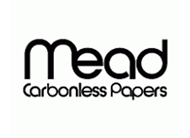Get to Know Fanfold Paper
There is a long list of paper materials which is being used by businesses right now and most of them play a really important role in collecting data and also creating reports. One of the papers which are on top of the list is Fanfold paper. This type of paper is actually a special kind of paper which is designed to be used for dot matrix printers and line printers as well. Fanfold paper actually belongs to a family of paper supplies which is specifically used for dot matrix printers and it can also be called as continuous paper, pin feed paper or sprocket feed paper.
Fanfold paper comes in a lot of types depending on the requirements that the buyer needs. This type of paper is available in single ply or multi-ply. The entrepreneur that makes use of this paper can also get it tear lines that runs along its perforations so that the edge with the perforation can be easily torn off when needed.
The great thing about Fanfold paper is that it has perforations along each edge, and tears line which defines the top and the bottom of the paper. This feature actually allows the paper to be fed into a dot matrix printer at either the top of the bottom. The main function of the perforated holes along each edge is to the rotating sprocket within the printer so that it can be easily pulled through the printer which then allows a smooth and unhindered process of printing a whole batch of identical forms.
Here are some of the other features that fanfold paper can have:
- Glueing
- Micro perforations
- Cross perforations
- Stop perforations
- Numbering
- Additional perforations
- File holes
- Koboflexing
A high grade continuous stationary paper will have a heavy bond weight similar to common typing paper, and uses a fine perforation of tiny pinholes an d will be pre-scored along the perforations. Once the printing process is complete it is folded along the pre-scored edge and then torn off. This type of high quality paper produces a very smooth edge with the appearance and edge quality of a normal cut sheet of typing paper, unlike the cheaper perforated paper which can produce a jagged edge.
d will be pre-scored along the perforations. Once the printing process is complete it is folded along the pre-scored edge and then torn off. This type of high quality paper produces a very smooth edge with the appearance and edge quality of a normal cut sheet of typing paper, unlike the cheaper perforated paper which can produce a jagged edge.
Cheaper grades of paper are commonly referred to as music paper or green bar paper. It has a lightweight bond, and the engagement holes cannot be removed. One side of this paper has regularly spaced light green horizontal stripes to aid in reading across the numerous columns of printed data.
Continuous stationary paper was first employed in computer systems in the 1960s and became much more popular and well known during the 1980s. This was due to the development of dot-matrix printers and the now very popular use of the home PC.




















